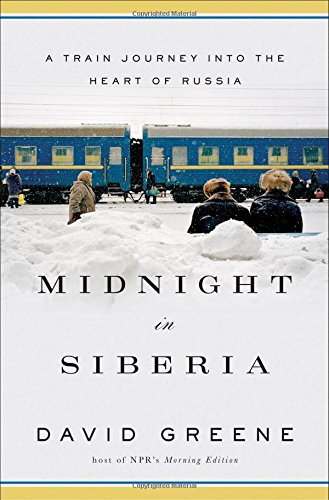In David Greene’s “Midnight in Siberia,” the author takes the readers on a journey across the vast landscape and through the towering metropolises of modern Russia. The non-fiction book written in 2014, starts in Moscow and ends in the Asiatic Vladivostok. However, within Greene’s travel memoire, there is no climactic structure. Instead, the author introduces the readers to the Russia culture that he meets and interacts with on the way.
David Greene was formerly a National Public Radio correspondent in Moscow before starting his trek through Russia by rail. In the beginning of the book, Greene, states his motivation for attempting this extensive journey, in which will stretch over five thousand miles.
“I am on this trip to see Russia, to experience it, to satisfy my curiosity and to answer enduring questions,” writes Greene in the introduction.
Greene, along with his Ukrainian partner Sergei, will confront various social and cultural factors along their route, exposing them to the paradoxical Russian soul. Greene and Sergei do not stay cramped up on the train for the entirety of the book. Instead they constantly get off at the destinations en-route to Vladivostok to relate and intermingle with the diverse ethos that surrounds them.
During the journey, Green and Sergei stop in the Russian cities currently being bombarded by the fierce Russian winter. They travel through Nizhny Novgorod, Kazan, Izhesk, Ishem and Birobidzhan, each being unlike the other but still holding a similar Russian tone. The author gives brief historical accounts of the various settings in which he encounters along the way, and how they relate to contemporary state. Greene describes the city of Yaroslavl and how its people were effected by the horrid plane crash, which killed their beloved local hockey team who were on board. He gives the tale of Alexie, who was cruelly punished by the Russian police for a crime he did not even commit and Vasily, the jubilant individual who takes Greene to the public bathhouses in order for him to experience the unusual domestic tradition.
With each chapter being titled after a significant individual in whom they meet in their journey, Greene presents to the readers the actuality which is taking place in modern day Russia. He explores the distinct microcosms that make up the country, the dark and dreary Russia that is still backwards since the fall of the Soviet Union. Greene writes how the country is being hampered by the notorious Vladimir Putin, vividly depicting the harsh realities in which are felt by the people. He presents the void that has been created between the “rich urban verses the rural and poor.” He writes about the incompetent and unlawful bureaucracy that heavily impacts the way of life. However, Greene does not always present gloomy and depressing tone. He also shows Russia’s high literacy rate, local sports, interesting cuisine and its obsession with vodka.
From being cramped within the third-class cart on the passenger train to interacting with the inhabitants of Soviet-era communal apartments, David Green delivers a realistic account of modern Russia. Over the span of 290 pages, “Midnight in Siberia” encapsulates the Russian soul and the surrounding setting through personality and emotion encouraged on the journey.









